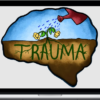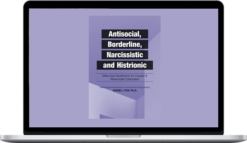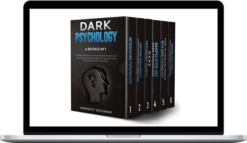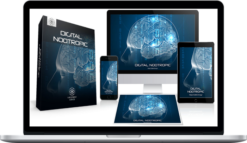NICABM – The Body’s Critical Role in the Treatment of Trauma
$197.00 $57.00
Total Sold: 1
»Instant Delivery
Description
NICABM – The Body’s Critical Role in the Treatment of Trauma
Description of The Body’s Critical Role in the Treatment of Trauma
How to Resolve Trauma Symptoms That Remain in the Body
Trauma dysregulates the nervous system and keeps the body hypervigilant toward potential threats.
So how can we help clients experience relief from the painful trauma symptoms that remain in the body?
That’s why we’re bringing you . . .
Why the Body Holds the Key to the Treatment of Trauma
- Two Key Skills for Identifying Trauma Memory in the Body
- How to Help Patients Connect Emotions with Body Experiences
- The Crucial First Step in Trauma Therapy
- How to Help Patients Develop the Resources for Stability
- Why It’s Important to Help Trauma Patients Recognize Body Sensations
- How Early Experience Shapes Body Movement (and How It Can Be Shifted)
What you’ll learn in The Body’s Critical Role in the Treatment of Trauma
- Downloadable video and audio to watch or listen to when it’s convenient for you
- Check mark TalkBack Segment to distill key ideas (this is where we “land” the session)
- Check mark Next Week in Your Practice video to give you concrete strategies to use with patients
- Check mark Printable QuickStart Guide to make review and action simpler than ever
- Check mark Professionally-formatted transcript of the session
About Pat Ogden, PhD
Pat Ogden, PhD is a pioneer in somatic psychology, and is the founder and director of the Sensorimotor Psychotherapy Institute.
She is first author of the groundbreaking book, Trauma and the Body: A Sensorimotor Approach to Psychotherapy, as well as Sensorimotor Psychotherapy: Interventions for Trauma and Attachment which she co-authored.
More courses from the same author: NICABM
Proof:
Delivery Policy
When will I receive my course?
You will receive a link to download your course immediately or within 1 to 21 days. It depends on the product you buy, so please read the short description of the product carefully before making a purchase.
How is my course delivered?
We share courses through Google Drive, so once your order is complete, you'll receive an invitation to view the course in your email.
To avoid any delay in delivery, please provide a Google mail and enter your email address correctly in the Checkout Page.
In case you submit a wrong email address, please contact us to resend the course to the correct email.
How do I check status of my order?
Please log in to HealingCourse account then go to Order Page. You will find all your orders includes number, date, status and total price.
If the status is Processing: Your course is being uploaded. Please be patient and wait for us to complete your order. If your order has multiple courses and one of them has not been updated with the download link, the status of the order is also Processing.
If the status is Completed: Your course is ready for immediate download. Click "VIEW" to view details and download the course.
Where can I find my course?
Once your order is complete, a link to download the course will automatically be sent to your email.
You can also get the download link by logging into your HealingCourse account then going to Downloads Page.
Related products
Total sold: 1
Total sold: 4
Total sold: 3









